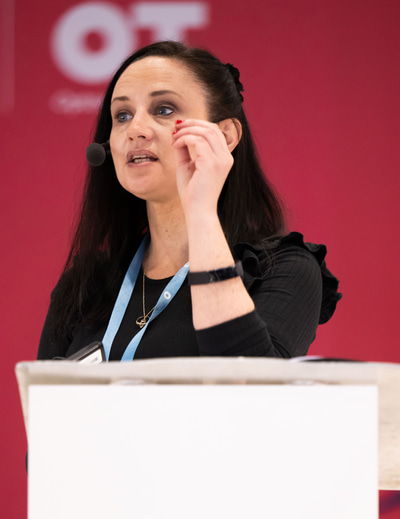- OT
- Industry
- Equipment and suppliers
- Industry in 2024: what is to come?
The 2024 viewpoint
Industry in 2024: what is to come?
Euromonitor International’s Natasha Cazin shares key themes to expect in the year ahead, and representatives from businesses across optics and eyewear, share their expectations for movement in the industry

30 December 2023
As attention turns to New Year, OT asked what the core drivers for innovation might be in the coming months.
Natasha Cazin, senior consultant – eyewear at Euromonitor International, gave OT a picture of how the market might develop, after seeing a “single digit growth” in 2023.

“Eyewear has a particularly strong growth potential due to the ageing population, and also the digitalization of consumer lifestyles,” she added.
The increasingly switched-on lifestyle drives demand for a variety of eyewear and eye care solutions.
One example was the launch of Johnson & Johnson Vision’s Acuvue Oasys Max 1-Day, and the multifocal option, Cazin said. The contact lens featured three technologies for comfort, including a more tear-like wetting agent.
“Myopia rates will continue to increase,” Cazin shared. “We think that this will generate an increasing demand for myopia control products. These have been doing really well, and I even know of friends whose children use these products now.”
The analyst pointed to key solutions in myopia management, including CooperVision’s MiSight, Hoya’s Miyosmart, and EssilorLuxottica’s Stellest lens.
Reflecting on the developments in myopia management, Cazin noted: “Education is a big thing, and will be key in 2024. I think that the industry needs to educate the consumer because many don't even understand the word ‘myopia.’ Companies are trying to educate on this, but I think there is still a long way to go.”
Myopia management was a recurring topic across OT headlines in 2023 – whether it was developments in research, new products and treatments, apps and education, or guidance for practitioners. To look back over all myopia-related news in OT, take a look at the ‘myopia’ tag.
Myopia resources
The AOP also has dedicated advice on Myopia management in clinical practice, highlighting the latest research and developments.
Cazin identified presbyopia as another area that will be driving demand.
“We’re seeing a rising ageing population, and so that is going to be key for presbyopia,” she said.
Asked what factors might shape consumer behaviour and demand in the year ahead, Cazin shared: “We will be seeing some trends continue from 2023 into 2024, but those will be trends on steroids. Like the ‘Budgeteers’ of 2023.”
“What we do expect to see is a gradual recovery in consumer purchasing power, because inflation rates are expected to become a little bit more stable,” she said.
Global Consumer Trends 2024
Looking ahead to 2024, diversity and inclusion in brands and products will be important, Cazin said.
“We are starting to see brands looking at the whole population, and not just a one-size-fits-all approach. That, I think, should be a focus in 2024 for all companies,” she explained.
In 2022, Vision Express launched a campaign to shine a light on eye health in menopause, and how eyewear can be incorporate into an individual’s style in their midlife.
“That was a brilliant campaign,” Cazin said, adding: “I think this space is something the industry could look at in more detail. I will be writing briefings on this and believe that, in the future, there will be more about this to come.”
Offering advice for practices, Cazin emphasised the importance of an omni-channel presence.
“Being online is important and you can do that in a cheap way,” she suggested.
However, leveraging the in-person practice experience and redefining retail space will be key.
Cazin shared: “Think carefully about how you define your retail space in order to win over your competitors. You need to be thinking about the space that you're in, and not just for it to be a clinical space, but create something that has a more of a community feel.”
Local production, using technological advancements, and addressing NHS backlogs
Looking at the core drivers that could shape 2024, Tom Davies, CEO of the House of Tom Davies, shared: “Supply chains have not recovered since COVID-19. I think you will see more local production as brands wrestle for control of supply chains.”
This requires training and investment, but Davies said, “It is already paying off for me. I think you will see more of this across the world.”
Offering a sentence on how he feels about 2024, Davies shared: “It’s going to be my year.”
I think you will see more local production as brands wrestle for control of supply chains

Mat Norris, CEO of Duncan and Todd Group, suggested: “I believe sustainability and advances in technology in the industry will continue to drive innovation. These have come a long way in the last few years and continue to make a huge difference in the lives of people all over the world.”
The group works with partners to ensure it is utilising technological advancements to improve clinical excellence, Norris said, from incorporating the latest technology into enhanced eye exams, to providing a virtual try-on for frames.
“Armed with this customer intelligence, Duncan and Todd Group can effectively adapt to changing market dynamics and evolving consumer preferences. We must be agile in applying these insights to new and future business strategies,” Norris said.
Looking to the year ahead, Norris’ personal approach is one of positivity: “I am optimistic, that by staying close to consumer insights and fostering an adaptable environment, we will maximise our growth opportunities and enhance our services to our communities.”
I believe sustainability and advances in technology in the industry will continue to drive innovation
Emily Mitchell, marketing manager at Heidelberg Engineering UK, suggested that a core driver for innovation in the year ahead will be: “The ongoing and urgent need to address NHS backlogs, which will require more efficient and effective diagnostic solutions and data management.”
The introduction of technologies utilising artificial intelligence will move the industry forward, along with new treatment options for geographic atrophy and wet age-related macular degeneration.
Mitchell also pointed to a need for dynamic visualisation and image-guided surgery.
Advertisement


Comments (0)
You must be logged in to join the discussion. Log in